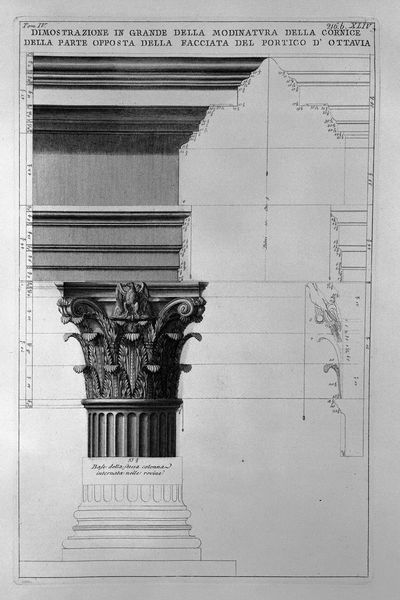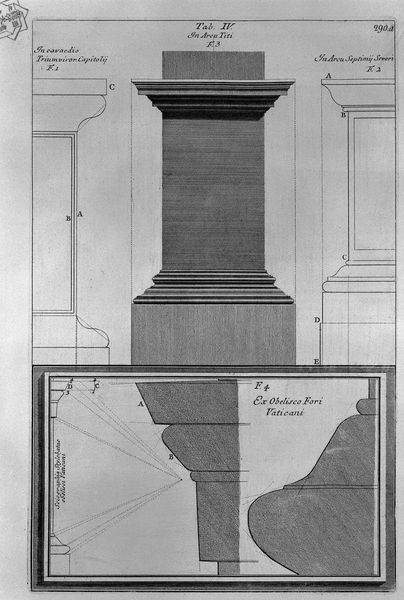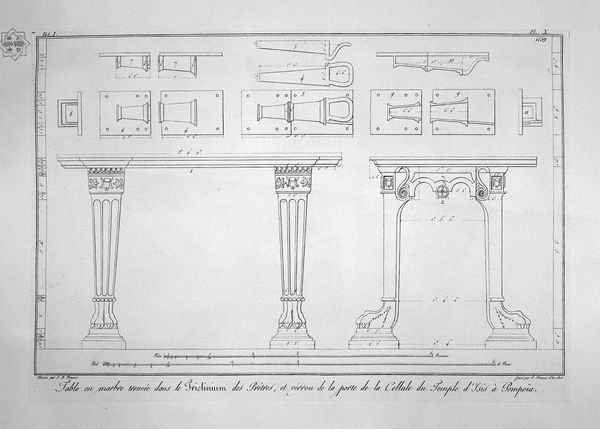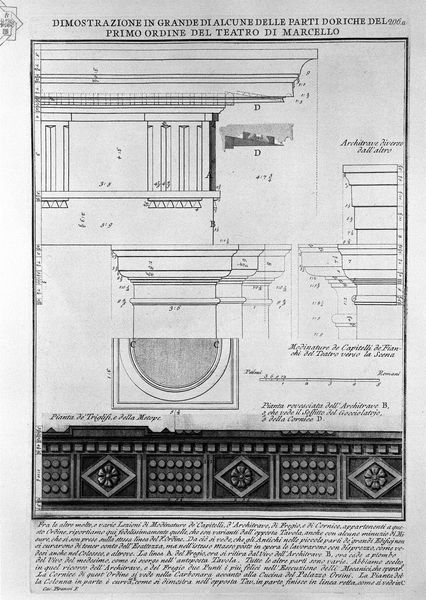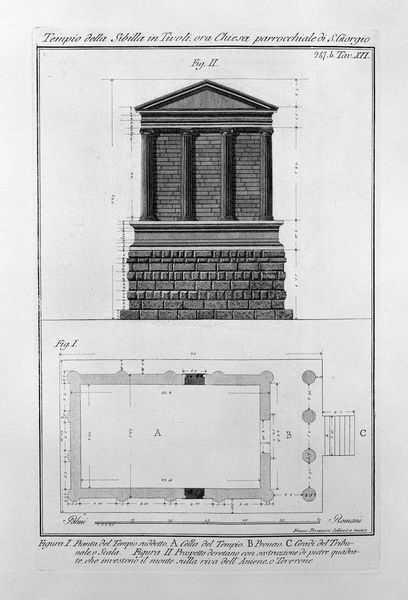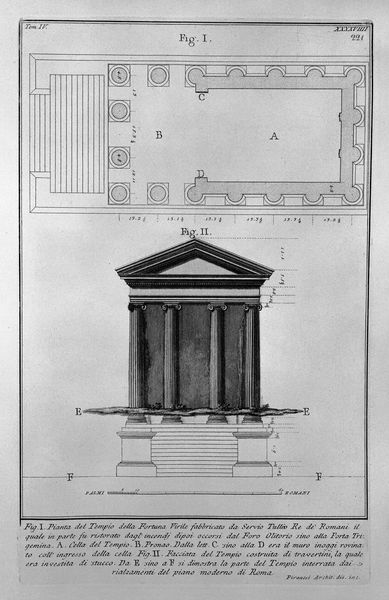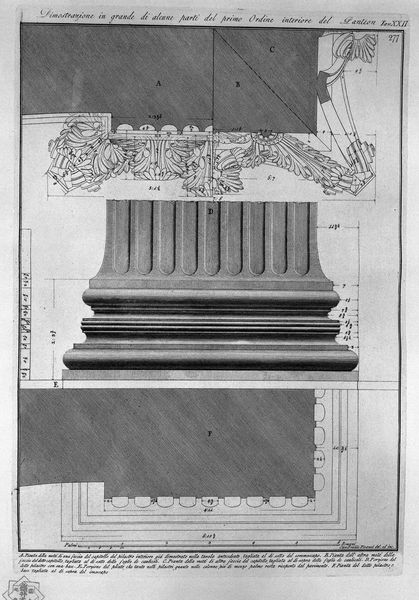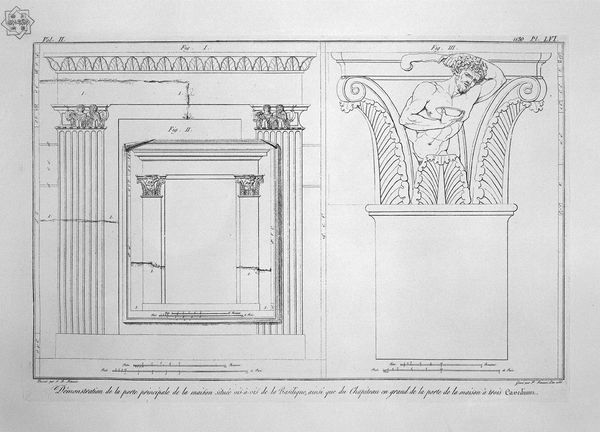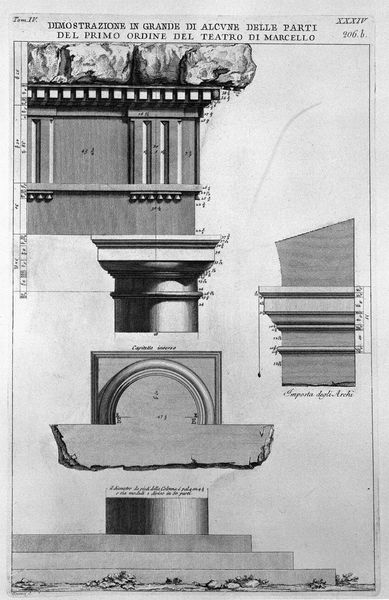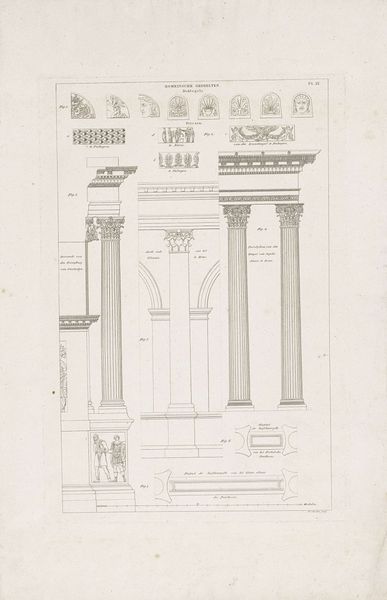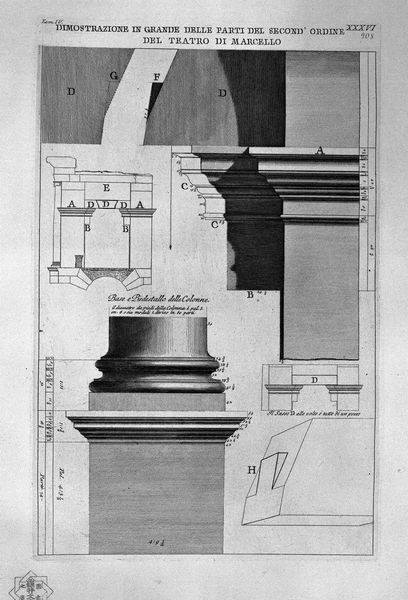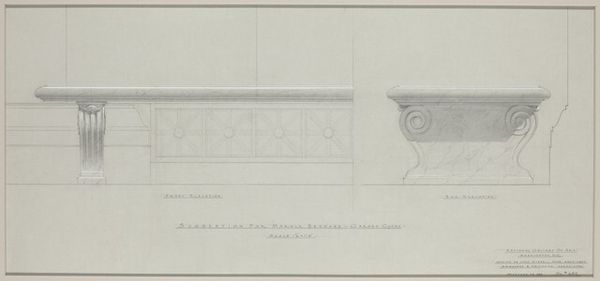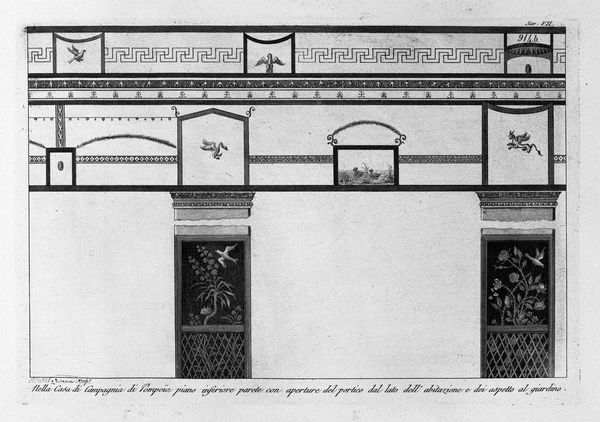
Bases and pedestals (a simple outline) (Arch of Augustus at Rimini, Fortuna Virile)
0:00
0:00
drawing, architecture
#
portrait
#
drawing
#
classical-realism
#
romanesque
#
geometric
#
classicism
#
ancient-mediterranean
#
line
#
architecture
Copyright: Public domain
Giovanni Battista Piranesi made this etching titled "Bases and pedestals" in the mid-18th century. During this period, the rediscovery of ancient Roman architecture sparked intense interest in classical forms and ideals. Piranesi's meticulous documentation reflects an era grappling with identity, particularly in relation to its historical roots. His detailed studies of architectural elements, like those of the Arch of Augustus, became a way to access the grandeur and moral authority associated with the Roman Empire. This pursuit of 'virtility' or manliness, in architecture and society, intersects with the time's gendered and class-based power structures. The "Fortuna Virilis," or the "Temple of Manly Fortune" highlights the gendered aspects of Roman ideals. Piranesi’s drawings offered a form of cultural preservation and shaped societal views by maintaining classical representations in a rapidly changing world. The emotional impact lies in experiencing the intersection between art and the quest for historical identity, connecting us to long-debated societal standards.
Comments
No comments
Be the first to comment and join the conversation on the ultimate creative platform.
